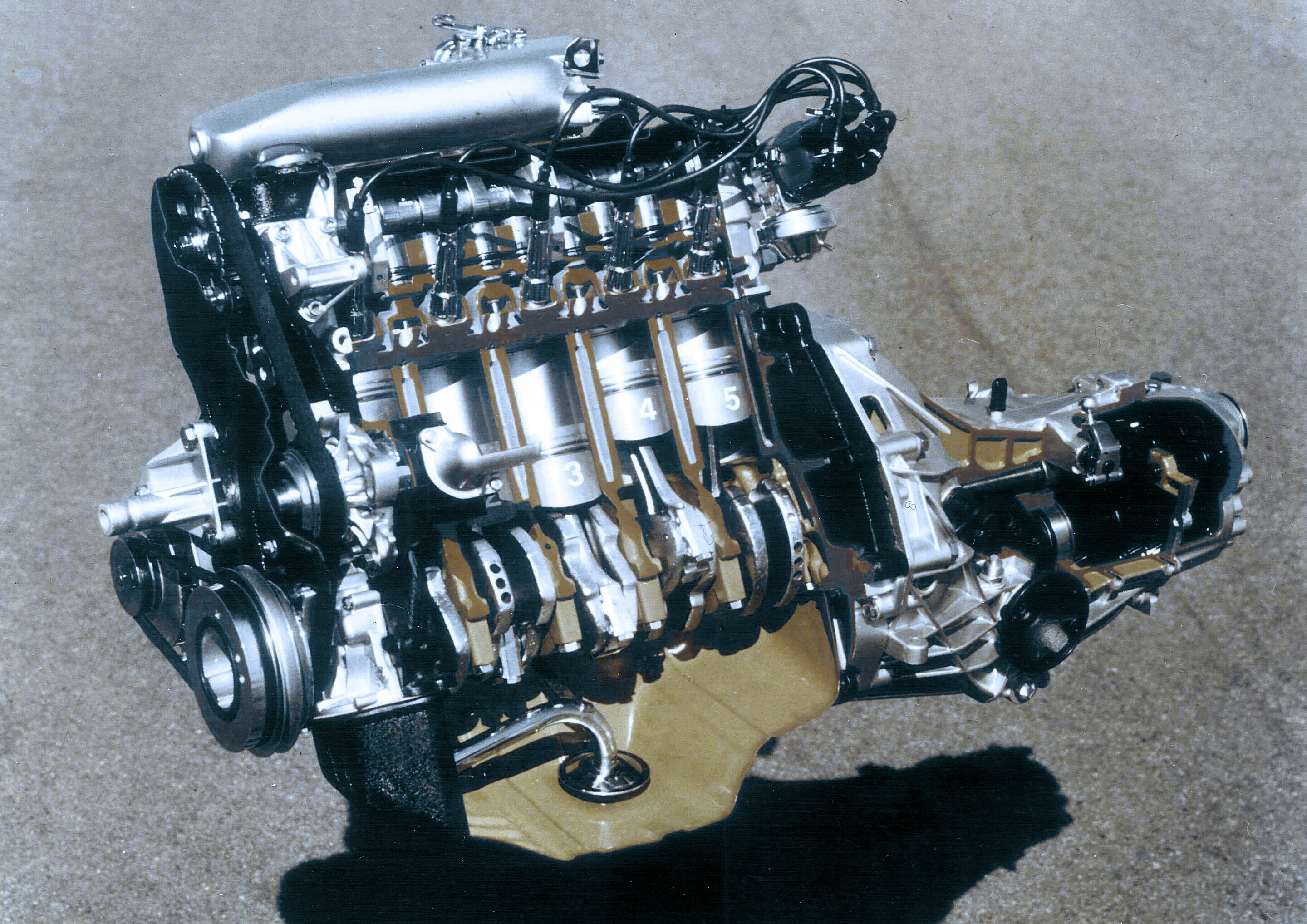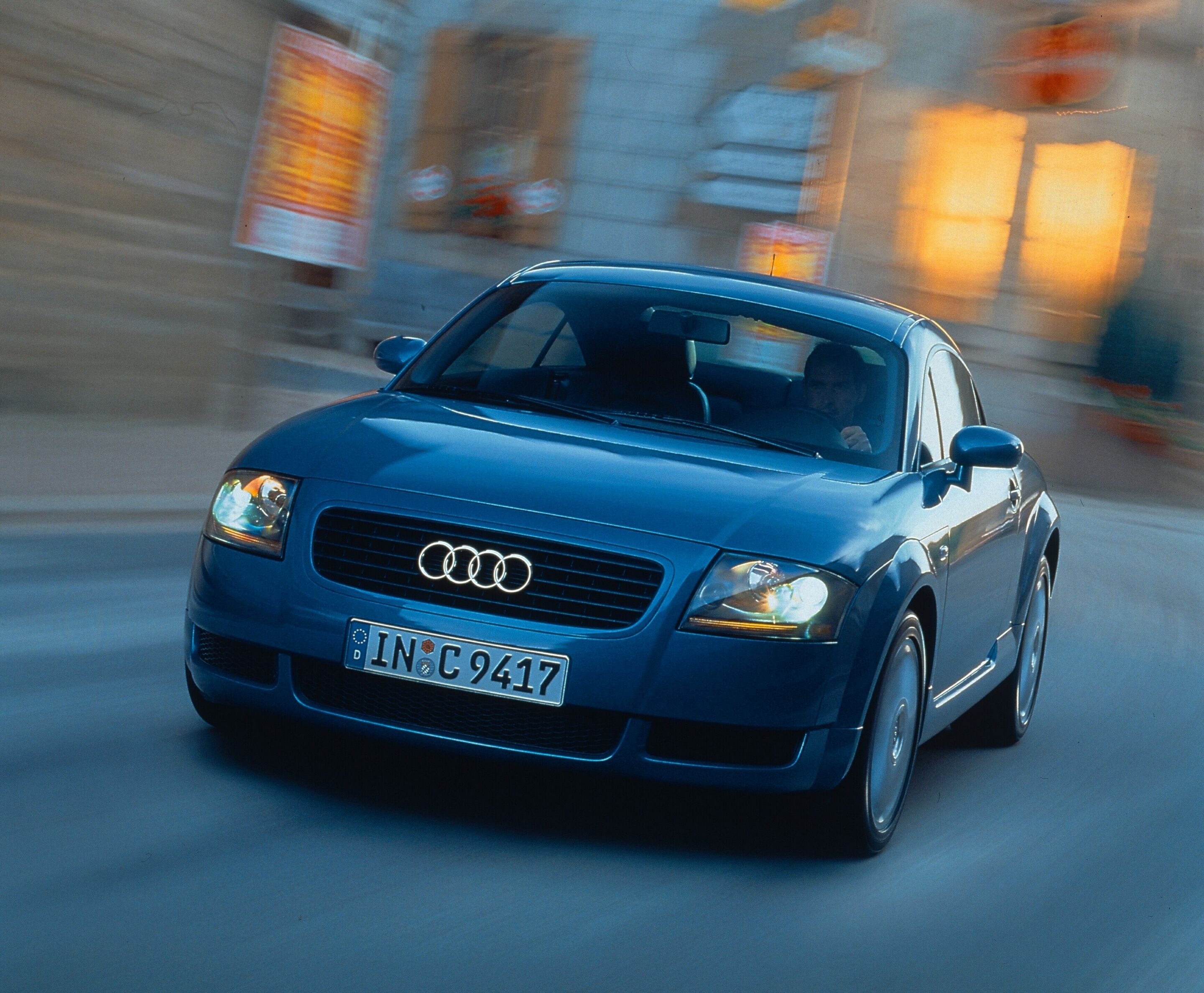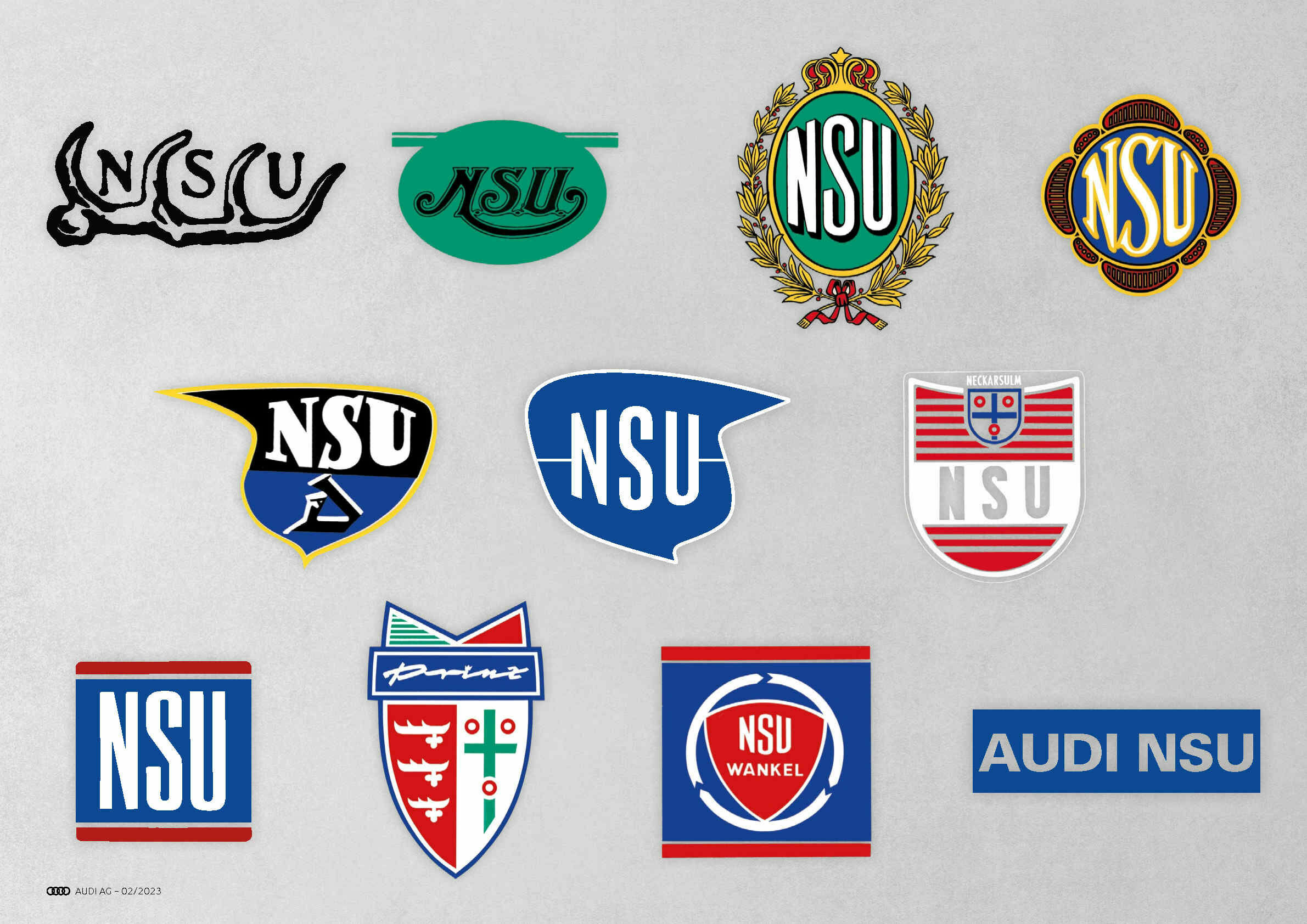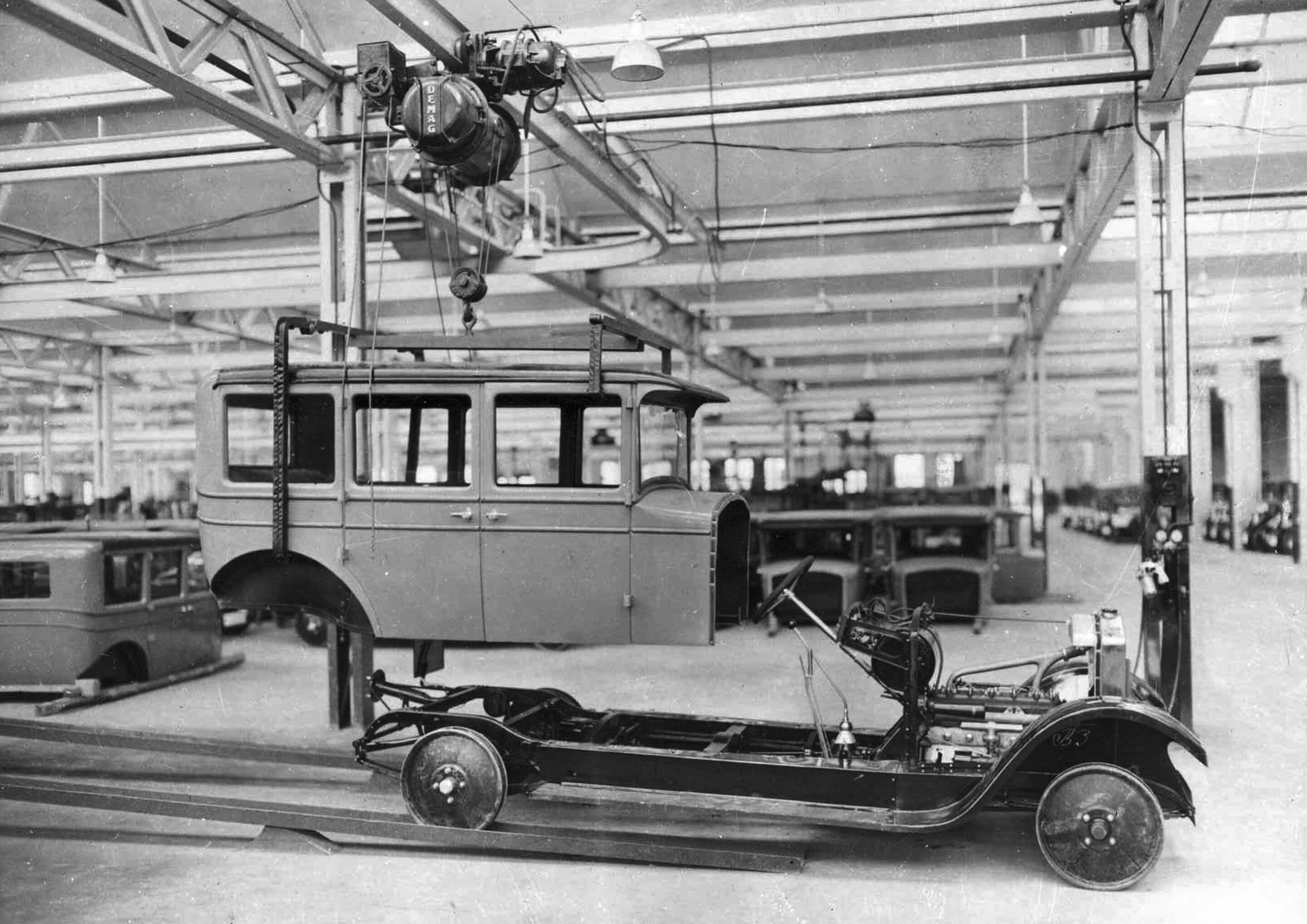Search
All search results for "audi a2 100 years audi"
(621)
 Audi Tradition to commemorate numerous anniversaries in 2025
Audi Tradition to commemorate numerous anniversaries in 2025
Booklet features a selection of more than two dozen anniversaries The launch of the Audi A2 25 years ago; the first new Audi in post-war times 60 years ago; and Hans Stuck’s record-breaking exploits in the “world’s fastest road-going car” near Lucca 90 years ago
With the “Anniversary Dates 2025” booklet, Audi Tradition is showcasing the most important moments in the product and company history of Audi, which is as eventful as it is diverse. Audi historians have selected a total of 27 dates to commemorate in 2025.
Twenty-five years ago, the Audi A2 hit the market. With its aluminum body, it made a name for itself as a progressive compact car: light, aerodynamic, and economical. The Audi A2 polarized opinion with its design and unusual proportions; the concept was ahead of its time. However, sales remained below expectations, and Audi ended production after roughly five years and 176,377 units built. Since then, the A2 became a fan favorite and is now a sought-after collector’s item. Sixty years ago, the first post–World War II Audi rolled off the production line. With the “Auto Union Audi” vehicle, Auto Union GmbH revived the tradition-steeped Audi brand name in 1965. The new name was meant to show that this car represented a fresh start for Auto Union in terms of technology. The Audi was the first car from the brand with four rings to feature a four-cylinder four-stroke engine, and it marked the beginning of a new era in Ingolstadt. Twenty years later, on January 1, 1985, Audi NSU Auto Union AG was renamed AUDI AG, and since that time, the company and its products have shared the same short, memorable name. Ninety years ago, in February 1935, a spectacular attempt to break speed records took place in Italy. After test drives in October 1934 with the Grand Prix racing car on the AVUS in Berlin, the Auto Union racing department started developing the vehicle that would later be known as the “Lucca” car.
 40 years of Audi five-cylinder engines
40 years of Audi five-cylinder engines
Five-cylinder engine delivering 136 hp presented for the first time in 1976 in the Audi 100 Successful engine concept for series production and rallying 2.5 TFSI voted “Engine of the Year” seven times in a row since 2010
40 years ago, Audi presented the first five-cylinder gasoline engine in the second-generation Audi 100. Enhancements and new developments followed, with turbocharging, emissions control and four-valve technology, rally engines and five-cylinder diesel units. Today, the 2.5 TFSI in the Audi RS 3 Sportback* and in the Audi TT RS* carries on the great tradition of five-cylinder powerplants.
The five-cylinder engines from Audi have achieved cult status – partly due to their successful deployment in motorsport and also on account of their reliability and economy. They have played a vital role in defining Vorsprung durch Technik and to this day provide an emotional driving experience with their characteristic sound. The first five-cylinder gasoline engine powered the Audi 100 (C2) in 1976. The model, known internally as Type 43, was to be positioned higher than its predecessor in the market. The four-cylinder engines at the time were not suitable for this plan according to the developers. At the beginning of the 1970s, Audi engineers consequently discussed the possibility of introducing five and six-cylinder inline engines. The latter were ruled out due to the installation space required and unfavorable weight distribution. So those responsible opted for the five-cylinder inline engine, based on the new EA 827 engine concept. This four-cylinder inline engine was used throughout the VW Group in the 1970s – in the Audi 80 and Audi 100, for instance. The derived 2.1-liter five-cylinder engine produced 100 kW (136 hp). A modern injection system increased efficiency and power development. Delivery of the Audi 100 5E began in March 1977.
 After “Windschnittig” comes “Form vollendet”: A new special exhibition at the Audi museum mobile
After “Windschnittig” comes “Form vollendet”: A new special exhibition at the Audi museum mobile
Aerodynamics in automotive manufacturing from 1945 to the present day: from concept cars and record-breaking models to race cars and the Cd world champion, the Audi 100 Almost 30 exhibits feature in a special exhibition from July 25, 2024, to March 2, 2025
Audi wrote engineering history in 1982 with the Audi 100. With its drag coefficient of 0.30, the third-generation Audi 100 was the world’s most aerodynamically efficient production saloon at the time, making it an essential part of the new special exhibition "Form vollendet". The new special exhibition will be at the Audi museum mobile in Ingolstadt until March 2, 2025, where Audi Tradition will present aerodynamic concepts from 1945 to the present day.
The aerodynamics research that flourished before the Second World War and which was the subject of Audi Tradition’s “Windschnittig” exhibition (German for “streamlined”) that ran until the end of June received little attention after 1945. Europe’s automotive industry was busy getting back on its feet. During this period, pre-war developments were still in use and improved upon. It wasn’t until the rising cost of fuel during the 1973 oil crisis prompted a shift in thinking that automotive engineers began focusing on reducing fuel consumption. One of the dials used to achieve this was aerodynamic drag. In 1982, Audi made a splash with the Audi 100; its drag coefficient of 0.30 set a world record for production sedans, a value that would become the benchmark for years to come. The new Audi Tradition special exhibition “Form vollendet” (German for “form perfected”) showcases the Cd world champion Audi 100 alongside other models such as the NSU Ro 80, the Porsche 356, the Lamborghini Countach, and the Ducati Paso 950.
 Powerhouses: five-cylinder engines at Audi
Powerhouses: five-cylinder engines at Audi
Five-cylinder engine delivering 136 hp presented for the first time in 1976 in the Audi 100 Successful engine concept for series production and rallying Audi RS 3: modified five-cylinder engine with more torque
Audi presented the first five-cylinder gasoline engine 45 years ago in the second-generation Audi 100. Enhancements and new developments followed with turbocharging, exhaust gas purification and four-valve technology, rally engines, and five-cylinder diesel units. The 2.5 TFSI won the “International Engine of the Year” award nine times in a row. Today, the high-performance engine in the new Audi RS 3 Sportback carries on the five-cylinder engine tradition – with more power than ever.
The five-cylinder engines from Audi have achieved cult status – partly due to their successful deployment in motorsport and also on account of their reliability and economy. The engine’s unique 1-2-4-5-3 ignition sequence and the incomparable sound that comes with it make the driving experience so exhilarating. The first five-cylinder gasoline engine powered the Audi 100 (C2) in 1976.
 A timeless design icon: The Audi TT turns 25
A timeless design icon: The Audi TT turns 25
Inspired by Bauhaus: Coupé study from 1995 began series production in 1998 178,765 first-generation Audi TT Coupés had rolled off the production line by 2006 Audi designer Torsten Wenzel introduced the study to series production: “The Audi TT is a driving sculpture”
Twenty-five years, three generations: The brand with the four rings wrote design history with the Audi TT. Since its debut in 1998, the sports car has struck a chord with people worldwide thanks to the fun it promises drivers and its clear design language. „Auto Europe“ voted it the best new car of the year in 1999.
In the mid-1990s, the Audi A8 luxury model elevated the Audi brand to a higher position and gradually led to the renaming of the model series: The Audi 80 became the Audi A4, and the Audi 100 was dubbed the Audi A6. Introduced in 1994, the Audi A4 was the first model to embody Audi’s new design language. Next was the Audi A3 premium compact car, launched in 1996, and the second generation of the Audi A6, introduced in 1997. In the course of emotionalizing the brand through a fresh, progressive design, American designer Freeman Thomas, under the then Head of Design Peter Schreyer, created a puristic sports car in the Audi TT Coupé. Audi presented the study to an enthusiastic trade show audience at the IAA in Frankfurt in September 1995. The model name “TT” is reminiscent of the legendary Tourist Trophy on the Isle of Man, one of the oldest motorsports events in the world and one where NSU and DKW celebrated great successes with their motorcycles. The name “TT” also recalls the sporty NSU TT of the 1960s. The Audi TT Coupé’s deliberate departure from the usual Audi nomenclature underscored the complete novelty of the model. Designer Wenzel: “In the Audi TT, every shape has a clear function” In December 1995, the decision was made to mass-produce the Audi TT Coupé.

Successful for decades: 662,762 units across three generations built over 25 years Design inspired by Bauhaus: every shape has a clear function Vorsprung durch Technik: New technologies launched with the TT, including Audi magnetic ride, Audi virtual cockpit, and OLED technology
A quarter of a century of TT history: When Audi presented the concept car at the IAA in 1995, public opinion became clear right away: “This car should be mass-produced – exactly as it is!” With the series debut in 1998, the Audi TT wrote design history and was built across three generations as a Coupé and Roadster.
With a vision of “a car for enthusiasts,” Audi presented the Audi TT Coupé as a sports car concept at the IAA in Frankfurt in the fall of 1995. Shortly afterward, the decision was made to mass-produce it. Torsten Wenzel, the exterior designer at Audi who helped introduce the study to series production, recalls: “To us, the greatest praise was when the trade press noted appreciatively that not much had changed from the concept to production model, although we did, of course, have to adapt many details due to the technical specifications for the production version, including the proportions.” Most noticeable was the integration of a rear side window, which elongated the car’s profile and increased the sports car’s dynamics. For Wenzel, the TT remains “a driving sculpture, with highest-quality surfaces and lines.” The body of the Audi TT appears to be made from one piece, Wenzel says, and the front end without traditional bumper overhangs emphasizes its distinctive shape. Another design element contributes to the unmistakable silhouette of the Audi TT Coupé: the circle – “the perfect graphic shape,” as Wenzel describes it. Numerous circular elements inspired the sports car’s exterior and interior design. Inspired by Bauhaus, every line in the Audi TT has a purpose, every shape a function. “At Audi Design, we always follow the philosophy of ‘less is more.’
 The traditional NSU brand and the Audi Neckarsulm site: 150 years of innovation and transformation
The traditional NSU brand and the Audi Neckarsulm site: 150 years of innovation and transformation
NSU had been working on a completely new engine concept with Felix Wankel since the beginning of the 1950s. In 1957, a Wankel-type rotary piston engine fired its ignition for the first time at an NSU testing station. In 1963, the Neckarsulm-based company introduced the NSU Wankel Spider at the IAA in Frankfurt, thus writing automotive history. It was the world’s first series-production automobile powered by a single-rotor rotary engine, with 497 ccs and 50 hp. The next sensation followed in the fall of 1967, when the Neckarsulm-based company introduced the NSU Ro 80 at the IAA in Frankfurt, thrilling the automotive world. The car was powered by a dual-rotor NSU/Wankel rotary engine (115 hp), and its revolutionary design attracted a lot of attention. Also in 1967, the NSU Ro 80 became the first German automobile to be voted Car of the Year. On March 10, 1969, a contract was signed to merge NSU Motorenwerke AG and the Ingolstadt-based Auto Union GmbH under the umbrella of the Volkswagen Group. With retroactive effect from January 1, 1969, AUDI NSU AUTO UNION AG was created with its headquarters in Neckarsulm, and Volkswagenwerk AG held a majority interest. The new company’s model range was greatly varied, even from a technical point of view. In addition to the NSU Prinz and NSU Ro 80, the Audi 100 was also built at the Neckarsulm site from then on. However, the two NSU models were phased out in the 1970s – the Prinz in 1973, after 15 years, and the Ro 80 in 1977, after ten years. Finally, on January 1, 1985, AUDI NSU AUTO UNION AG was renamed AUDI AG, and the company’s headquarters were moved from Neckarsulm to Ingolstadt. The company and products have borne the same name ever since. Transformation, constantly reinventing oneself and one’s products – this is part of the history of NSU and Audi’s Neckarsulm site. It has developed both rapidly and continually in recent decades.
 History
History
1873 Christian Schmidt and Heinrich Stoll establish a workshop for the production of knitting machines in Riedlingen on the Danube. 1880 The company relocates to Neckarsulm 1886 Bicycle production begins 1900 Motorcycle production begins 1906 Production of automobiles begins (“Original Neckarsulmer Motorwagen”) 1928 Automobile production ends and the factory in Heilbronn is sold 1933 Ferdinand Porsche commissioned to build the NSU/Porsche Type 32, the VW Beetle’s predecessor 1945 Part of the plant is destroyed in World War II; production gradually resumes beginning in mid-1945 1955 NSU Werke AG is the world’s largest motorcycle plant 1958 Automobile production resumes with the NSU Prinz I to III 1964 Production of the NSU/Wankel Spider, the world’s first production car with a rotary piston engine, begins 1967 Series production of the NSU Ro 80 begins; due to its futuristic design and rotary piston engine, it is voted “1968 Car of the Year” 1969 Merger with Auto Union GmbH Ingolstadt to become Audi NSU Auto Union AG; the majority shareholder is Volkswagen AG 1974/75 The site is threatened with closure during the oil crisis.
